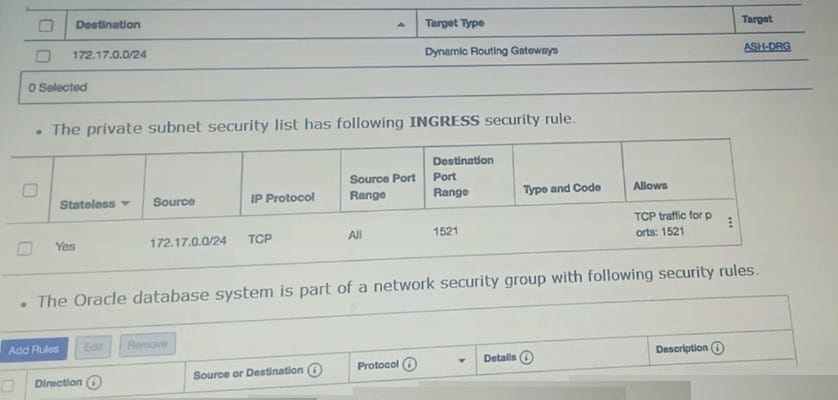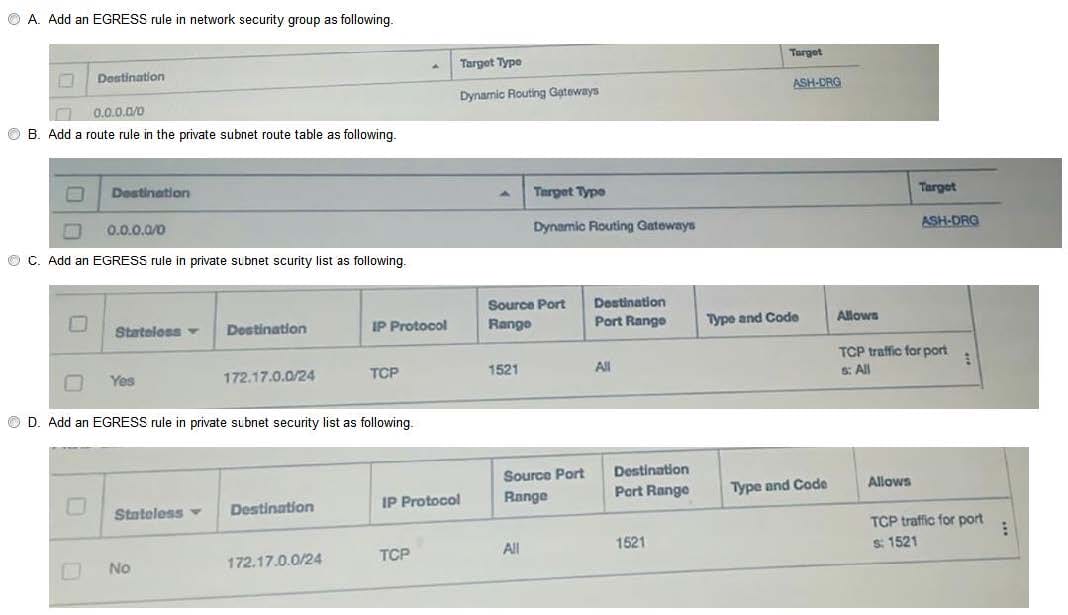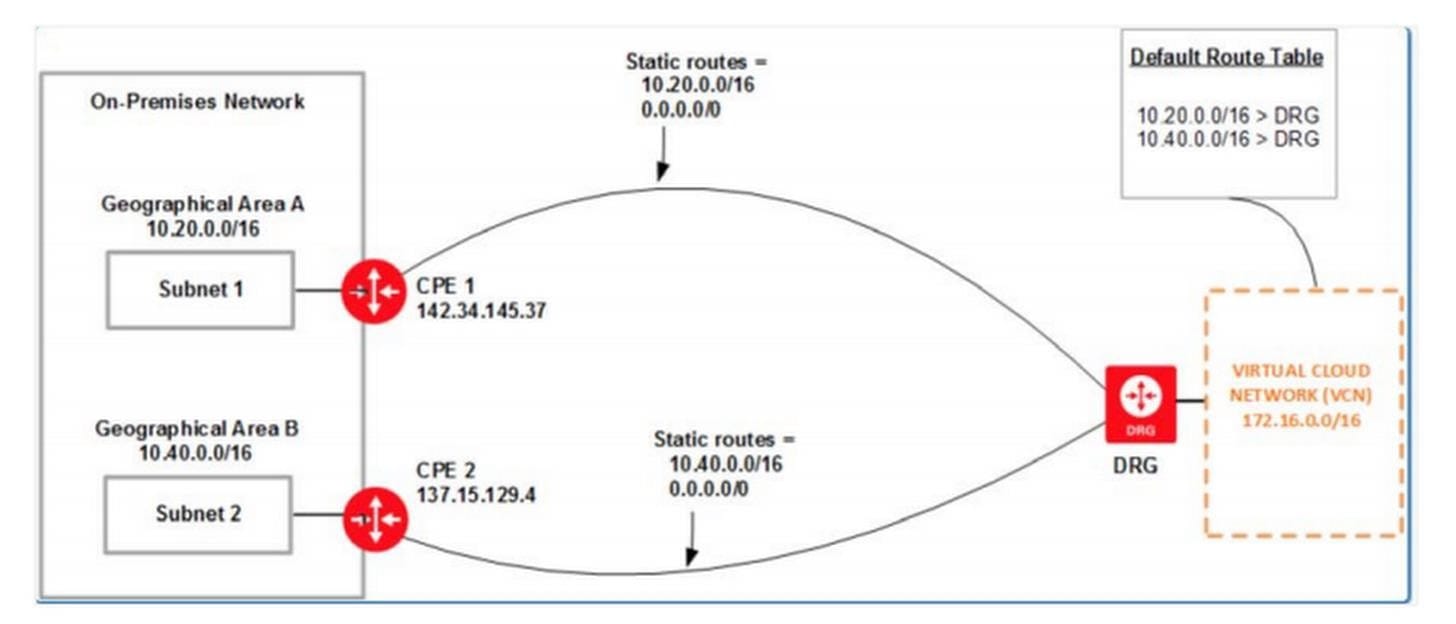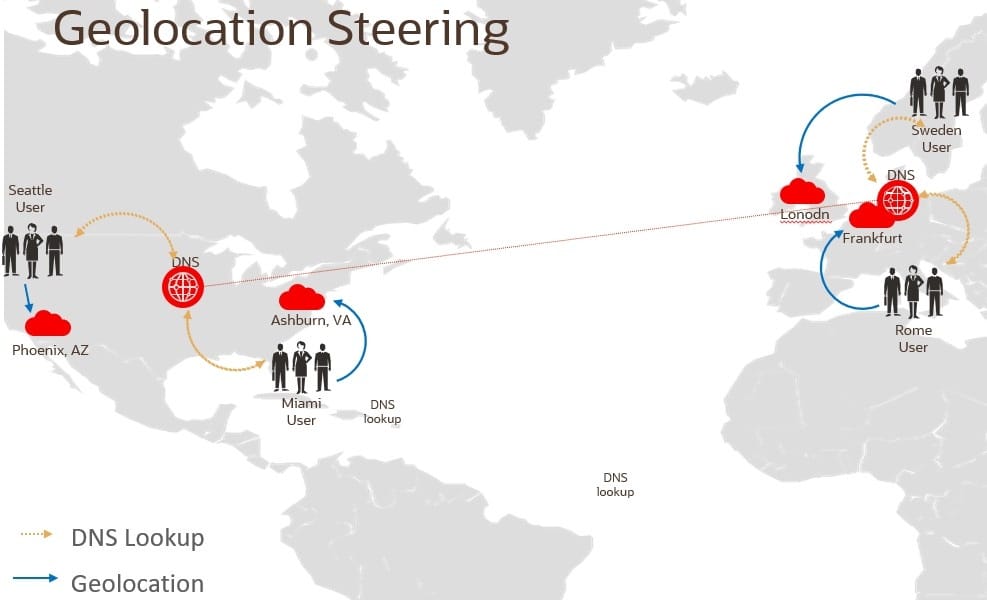Exam Details
Exam Code
:1Z0-997-20Exam Name
:Oracle Cloud Infrastructure 2020 Architect ProfessionalCertification
:Oracle CertificationsVendor
:OracleTotal Questions
:165 Q&AsLast Updated
:Mar 29, 2025
Oracle Oracle Certifications 1Z0-997-20 Questions & Answers
-
Question 121:
You want to automate the processing of new image files to generate thumbnails. The expected rate is 10 new files every hour. Which of the following is the most cost effective option to meet this requirement in Oracle Cloud Infrastructure (OCI)?
A. Upload all files to an Oracle Streaming Service (OSS) stream. Setup a cron job to invoke a function in Oracle Functions to fetch data from the stream. Invoke another function to process the image files and generate thumbnails. Store thumbnails in another OSS stream.
B. Upload files to an OCI Object storage bucket. Every time a file is uploaded, an event is emitted. Write a rule to filter these events with an action to trigger a function in Oracle Functions. The function processes the image in the file and stores the thumbnails back in an Object storage bucket.
C. Build a web application to ingest the files and save them to a NoSQL Database. Configure OCI Events service to trigger a notification using Oracle Notification Service (ONS). ONS invokes a custom application to process the image files to generate thumbnails. Store thumbnails in a NoSQL Database table.
D. Upload files to an OCI Object storage bucket. Every time a file is uploaded, trigger an event with an action to provision a compute instance with a cloud-init script to access the file, process it and store it back in an Object storage bucket.
Terminate the instance using Autoscaling policy after the processing is finished.
-
Question 122:
A retail company has several on-premises data centers which span multiple geographical locations. They plan to move some of their applications from on-premises data centers to Oracle Cloud Infrastructure (OCI). For these applications running in OCI, they still need to interact with applications running on their on-premises data centers to Oracle Cloud Infrastructure (OCI). for these applications running in OCI. they still need to interact with applications running on their on-premises data centers. These applications require highly available, fault-tolerant network connections between on premises data centers and OCI.
Which option should you recommend to provide the highest level of redundancy?
A. Oracle cloud Infrastructure provides network redundancy by default so that no other operations are required
B. If your data centers span multiple, geographical locations, use only the specific IP address as a static route for the specific geographical location
C. Set up both IPSec VPN and FastConnect to connect your on premises data centers to Oracle Cloud Infrastructure.
D. Use FastConnect private peering only to ensure secure access from your data center to Oracle Cloud Infrastructure
E. Set up a single IPSec VPN connection (rom your data center to Oracle Cloud Infrastructure since It is cost effective
-
Question 123:
You work for a large bank where security and compliance are critical. As part of the security overview meeting, your company decided to minimize the installation of local tools on your laptop. You have been running Ansible and kubectl to spin up Oracle Container Engine for Kubernetes (OKE) clusters and deployed your application.
For authentication, you are using an Oracle Cloud Infrastructure (OCI) CLI config file that contains OCIDs, Fingerprint, and a locally stored PEM file. Your security team doesn't want you to store any local API key and certificate, or any other local tools.
Which two actions should you perform to spin up the OKE cluster and interact with it? (Choose two.)
A. Create a developer workstation on OCI. Install Ansible and kubectl on it. Use resource principal to authenticate against OCI API and create the OKE Cluster.
B. Develop your own code using OCI SDK to deploy the OKE cluster.
C. Work on OCI Cloud Shell to use built-in Ansible and kubectl to deploy the OKE cluster. Use OCI_CLI_AUTH=instance_obo_user environment variable to authenticate using built- in token.
D. Work on OCI Cloud Shell to use built-in Ansible and kubectl to deploy the OKE cluster. Bring in your own config file and certificate to authenticate against OCI API.
E. Create a developer workstation on OCI. Install Ansible and kubectl on it. Use instance principal to authenticate against OCI API and create the OKE Cluster.
-
Question 124:
You are working as a solution architect with a global automotive provider who is looking to create a multi-cloud solution. They want to run their application tier in Microsoft Azure while utilizing the Oracle DB Systems in the Oracle Cloud Infrastructure (OCI).
What is the most-fault tolerant and secure solution for this customer? (Choose the best answer.)
A. Deploy the Oracle database system into a public subnet in your VCN and assign a public IP address. Connect your application tier running in Azure to the public IP address of the database system over the internet.
B. Create a FastConnect virtual circuit with Microsoft Azure as the provider to establish a private interconnect between the application tier running in the Azure Virtual Network and the OCI VCN that contains the Oracle Databases.
C. Create an encrypted, Virtual Private Network connection between the Microsoft Azure Virtual Network that contains the application tier and the OCI Virtual Cloud Network (VCN) that contains the Oracle Databases.
D. Use an OCI Virtual Cloud Network remote peering connection to create a remote network connection between the application tier running in Microsoft Azure Virtual Network and Oracle Databases running in the OCI Virtual Cloud Network (VCN).
-
Question 125:
A cloud consultant is working on implementation project on OCI. As part of the compliance requirements, the objects placed in object storage should be automatically archived first and then deleted. He is testing a Lifecycle Policy on Object
Storage and created a policy as below:
[ { "name": "Archive_doc", "action": "ARCHIVE", "objectNameFilter": { "inclusionPrefixes":
"doc"] },
"timeAmount": 5, "timeunit": "DAYS", "isEnabled": true },
{ "name": "Delete_doc", "action": "DELETE", "objectNameFilter": "inclusionPrefixes": [ "doc"]
1."timeAmount": 5, "timeunit": "DAYS", "isEnabled": true }
What will happen after this policy is applied?
A. All objects with names starting with "doc" will be deleted after 5 days of object creation
B. All the objects having file extension ".doc" will be archived for 5 days and will be deleted 10 days after object creation
C. All the objects having file extension ".doc" will be archived 5 days after object creation
D. All the objects with names starting with "doc" will be archived 5 days after object creation and will be deleted 5 days after archival
-
Question 126:
You have an Oracle database system in a virtual cloud network (VCN) that needs to be accessible on port 1521 from your on-premises network CIDR 172.17.0.0/24.
You have the following configuration currently.
Virtual cloud network (VCD) is associated with a Dynamic Routing Gateway (DRG), and DRG has an active IPSec connection with your on-premises data center.
Oracle database system is hosted in a private subnet
The private subnet route table has the following configuration
The private subnet route table has following configuration.

However, you are still unable to connect to the Oracle Database system. Which action will resolve this issue?

A. Option A
B. Option B
C. Option C
D. Option D
-
Question 127:
A global retailer is setting up the cloud architecture to be deployed in Oracle Cloud infrastructure (OCI) which will have thousands of users from two major geographical regions: North America and Asia Pacific. The requirements of the services are:
*
Service needs to be available 27/7 to avoid any business disruption
*
North American customers should be served by application running In North American regions
*
Asia Pacific customers should be served by applications running In Asia Pacific regions
*
Must be resilient enough to handle the outage of an entire OCI region
A.
OCl DNS, Traffic Management with Failover steering policy
B.
OCl DNS, Traffic Management with Geolocation steering policy. Health Checks
C.
OCl DNS, Traffic Management with Geolocation steering policy
D.
OCl DNS,' Traffic Management with Load Balancer steering policy, Health Checks
-
Question 128:
You are working with a social media company as a solution architect. The media company wants to collect and analyze large amounts of data being generated from their websites and social media feeds to gain insights and continuously improve the user experience. In order to meet this requirement, you have developed a microservices application hosted on Oracle Container Engine for Kubernetes. The application will process the data and store the result to an Autonomous Data Warehouse (ADW) instance.
Which Oracle Cloud Infrastructure (OCI) service can you use to collect and process a large volume of unstructured data in real time?
A. OCI Events
B. OCI Streaming
C. OCI Resource Manager
D. OCI Notifications
-
Question 129:
A small business specializing in video processing wants to leverage cloud storage in order to lower its costs. They are looking to backup all video data generated, from an existing on- premises file server to Oracle Cloud Infrastructure (OCI). The requirement is to setup continuous data sync as changes are made to on-premises file server. What is the most cost effective solution for this scenario?
A. Set up a Fastconnect virtual Circuit and nightly back up all videos to OCI Archive Storage.
B. Set up file storage service on OCI and mount the file system to an instance running on- premises. Move all the data to this on-premises instance and then sync the videos to the shared file system.
C. Set up a VPN connect connection and back up all videos to Object storage standard bucket. Create a lifecycle policy to move files older than 30 days to Archive Storage.
D. Setup an on-premises OCI Storage Gateway Cloud Sync to back up videos to OCI Object Storage Archive tier.
-
Question 130:
A large E-commerce company is looking to run seasonal workloads in Oracle Cloud Infrastructure. The Oracle database used by their E-commerce application can use up to 52 cores at peak workloads. Due to the seasonal nature of the business, the database will be not be used for 10 months in a year and can also be shut down during non-business hours.
A. Autonomous Transaction Processing with shared Exadata infrastructure
B. Oracle Cloud Infrastructure Exadata DB Systems
C. Oracle Cloud Infrastructure Virtual Machine DB Systems
D. Oracle Cloud Infrastructure Bare Metal DB Systems
Related Exams:
1Z0-020
Oracle8i: New Features for Administrators1Z0-023
Architecture and Administration1Z0-024
Performance Tuning1Z0-025
Backup and Recovery1Z0-026
Network Administration1Z0-034
Upgrade Oracle9i/10g OCA to Oracle Database OCP1Z0-036
Managing Oracle9i on Linux1Z0-041
Oracle Database 10g: DBA Assessment1Z0-052
Oracle Database 11g: Administration Workshop I1Z0-053
Oracle Database 11g: Administration II
Tips on How to Prepare for the Exams
Nowadays, the certification exams become more and more important and required by more and more enterprises when applying for a job. But how to prepare for the exam effectively? How to prepare for the exam in a short time with less efforts? How to get a ideal result and how to find the most reliable resources? Here on Vcedump.com, you will find all the answers. Vcedump.com provide not only Oracle exam questions, answers and explanations but also complete assistance on your exam preparation and certification application. If you are confused on your 1Z0-997-20 exam preparations and Oracle certification application, do not hesitate to visit our Vcedump.com to find your solutions here.

